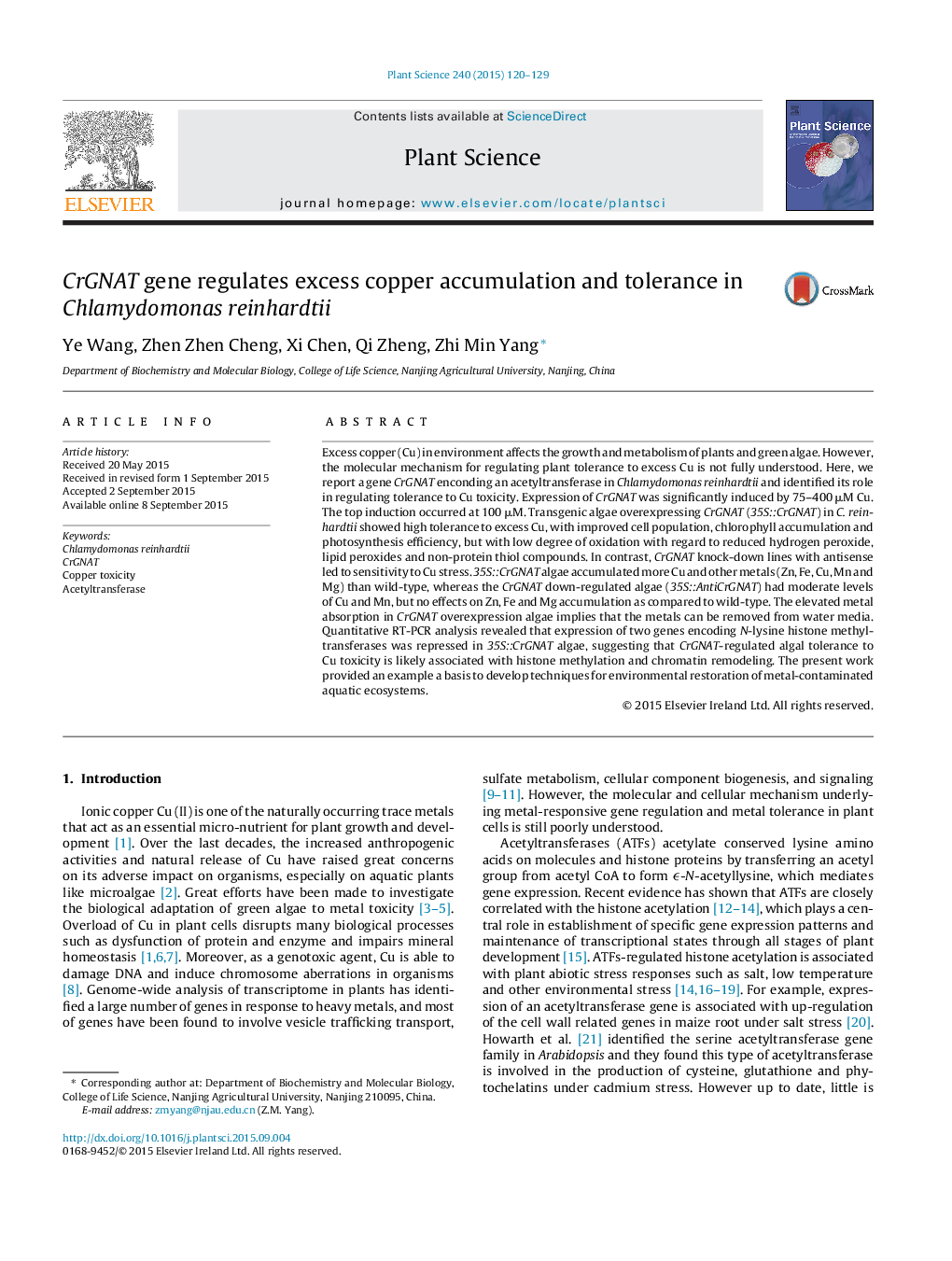| Article ID | Journal | Published Year | Pages | File Type |
|---|---|---|---|---|
| 8357543 | Plant Science | 2015 | 10 Pages |
Abstract
Excess copper (Cu) in environment affects the growth and metabolism of plants and green algae. However, the molecular mechanism for regulating plant tolerance to excess Cu is not fully understood. Here, we report a gene CrGNAT enconding an acetyltransferase in Chlamydomonas reinhardtii and identified its role in regulating tolerance to Cu toxicity. Expression of CrGNAT was significantly induced by 75-400 μM Cu. The top induction occurred at 100 μM. Transgenic algae overexpressing CrGNAT (35S::CrGNAT) in C. reinhardtii showed high tolerance to excess Cu, with improved cell population, chlorophyll accumulation and photosynthesis efficiency, but with low degree of oxidation with regard to reduced hydrogen peroxide, lipid peroxides and non-protein thiol compounds. In contrast, CrGNAT knock-down lines with antisense led to sensitivity to Cu stress. 35S::CrGNAT algae accumulated more Cu and other metals (Zn, Fe, Cu, Mn and Mg) than wild-type, whereas the CrGNAT down-regulated algae (35S::AntiCrGNAT) had moderate levels of Cu and Mn, but no effects on Zn, Fe and Mg accumulation as compared to wild-type. The elevated metal absorption in CrGNAT overexpression algae implies that the metals can be removed from water media. Quantitative RT-PCR analysis revealed that expression of two genes encoding N-lysine histone methyltransferases was repressed in 35S::CrGNAT algae, suggesting that CrGNAT-regulated algal tolerance to Cu toxicity is likely associated with histone methylation and chromatin remodeling. The present work provided an example a basis to develop techniques for environmental restoration of metal-contaminated aquatic ecosystems.
Related Topics
Life Sciences
Agricultural and Biological Sciences
Plant Science
Authors
Ye Wang, Zhen Zhen Cheng, Xi Chen, Qi Zheng, Zhi Min Yang,
